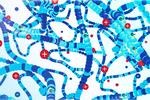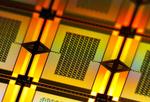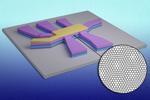Other

“MIT engineers developed organic polymers that can efficiently convert signals from biological tissue into the electronic signals used in transistors. Certain electronics that integrate with the human body — a smartwatch that samples your sweat, for instance — work by converting the …

““Squeezing” noise over a broad frequency bandwidth in a quantum system could lead to faster and more accurate quantum measurements. A certain amount of noise is inherent in any quantum system. For instance, when researchers want to read information from …

“A new study shows how large language models like GPT-3 can learn a new task from just a few examples, without the need for any new training data. Large language models like OpenAI’s GPT-3 are massive neural …

“Stacking light-emitting diodes instead of placing them side by side could enable fully immersive virtual reality displays and higher-resolution digital screens. Take apart your laptop screen, and at its heart you’ll find a plate patterned with pixels of red …

“The findings could provide a new way to control chemical reactions. If she hits just the right pitch, a singer can shatter a wine glass. The reason is resonance. While the glass may vibrate slightly in response to most acoustic …

“A quick electric pulse completely flips the material’s electronic properties, opening a route to ultrafast, brain-inspired, superconducting electronics. With some careful twisting and stacking, MIT physicists have revealed a new and exotic property in “magic-angle” graphene: superconductivity that can …

“Researchers urge industry and the research community to explore electrification pathways to reduce chemical industry emissions. The chemical industry is the world’s largest industrial energy consumer and the third-largest source of industrial emissions, according to the International Energy Agency …

“Growing from a strong foundation built at MIT CSAIL and other academic hosts, W3C will continue its mission of developing standards for an open and equitable web. The World Wide Web Consortium (W3C), which leads development of the technical standards …

“Computer scientists want to know the exact limits in our ability to clean up, and reconstruct, partly blurred images. In science and technology, there has been a long and steady drive toward improving the accuracy of measurements of all kinds …

“A new technique helps verify the accuracy of experiments that probe the strange behavior of atomic-scale systems. At the scale of individual atoms, physics gets weird. Researchers are working to reveal, harness, and control these strange quantum effects using quantum …
